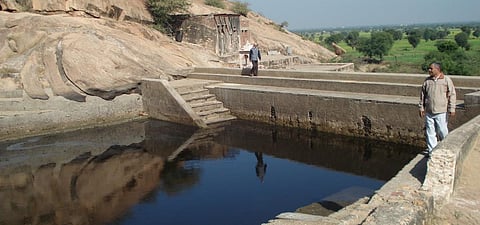

Soaring temperatures have led to a dip in live storage levels in the country’s 123 reservoirs. The levels plummetted to 47 per cent from 57 per cent of their total capacity in last one month, according to monitoring agency Central Water Commission (CWC).
Live storage is a portion of the reservoir that can be used for several purposes including flood control, power production, navigation and downstream releases.
The total capacity of the reservoirs monitored was 171.09 billion cubic metre (BCM). The total live storage was 80.30 BCM, as of April 2020.
At least three reservoirs — Tattihalla in Karnataka's Uttara Kannada district and Sholayar and Aliyar in Tamil Nadu's Coimbatore district — have zero per cent live storage, according to the data.
Singur dam in Telangana has only two per cent storage of its total capacity.
Tripura and Nagaland recorded a deficit — a departure of 38 and 13 per cent from normal storage levels, as on April 9, 2020.
In fact, all northeastern states, with the exception of Sikkim, received ‘deficient’ or ‘large deficient’ rainfall between March 1 and April 13, according to India Meteorological Department (IMD) data.
Uttar Pradesh had only nine per cent more storage than its normal levels — even though it received ‘excess’ rainfall in the last one month.
The 42 reservoirs in south India had the lowest overall storage of 35 per cent, followed by north India at 48 per cent.
The eastern, central, and western regions had 56, 53 and 52 per cent live storage respectively.
These 123 reservoirs had 80 per cent live storage at the beginning of the year. By February-end, it came down to 60 per cent, and 52 per cent by March-end.
The CWC bulletin, however, stated that storage is 163 per cent of the live storage of corresponding period of 2019, and 157 per cent of storage of average last ten years.
But that could be because the CWC was only monitoring 91 reservoirs till 2019; it increased monitoring to 123 reservoirs only in January 2020.
According to its latest bulletin, all river basins have ‘better than normal storage’ position. These include Ganga, Indus, Narmada, Tapi, Mahi, Sabarmati, Rivers of Kutch, Godavari, Krishna, Mahanadi and neighbouring East Flowing Rivers (EFRs).